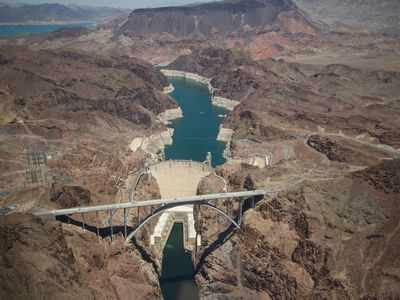Gravity is the natural force of attraction that pulls objects with mass toward one another. It keeps planets in orbit around the Sun, makes objects fall to the ground, and holds the Earth's atmosphere in place. The strength of gravity depends on the masses of the objects and the distance between them: the more massive and closer the objects, the stronger the gravitational pull. Isaac Newton first formulated the laws of gravity, while Albert Einstein later refined the concept with his theory of general relativity, which describes gravity as the warping of space and time by mass.
Earth’s gravity is the force that pulls objects toward the center of the Earth. This force gives weight to physical objects and keeps them grounded, preventing them from floating off into space. Earth’s gravity works due to the mass of the planet; all objects with mass exert a gravitational pull, but because the Earth is so massive, it creates a significant gravitational field around it.
Gravity operates everywhere on Earth, and there isn’t anywhere on the surface where it "doesn’t work." However, gravity’s strength can vary slightly in different places. For instance:
Altitude: Gravity is slightly weaker at higher altitudes (like on top of a mountain) because you're further from Earth's center.
Latitude: Gravity is also slightly weaker at the equator compared to the poles due to Earth’s rotation and its slightly flattened shape.
Local geology: Large geological formations, like mountain ranges, can cause tiny variations in gravitational pull due to the density of the materials beneath the Earth's surface.
In all these cases, gravity is still functioning—it’s just that small variations exist in its strength across Earth’s surface. For gravity to “not work” at all, one would need to be extremely far from any massive object, such as in deep space, where gravitational forces from nearby bodies are negligible.
Five Fascinating Places Where Gravity Seems to Vanish
1.
Santa Cruz, California
This mysterious spot, discovered in 1939 and opened to the public in 1940,
continues to baffle visitors. A strange, tilted shack here gives the impression
that it’s always on the verge of collapsing, while people walking around appear
to be leaning at odd angles. Objects, too, seem to defy gravity, rolling uphill
rather than down, as if the very fabric of gravitational force is warped.
3.
Magnetic Hill, Ladakh, India
On the road to Kargil lies Magnetic Hill, known for its alleged magnetic pull
that attracts vehicles. It’s said that even if a car is put in neutral, it
starts moving uphill as if drawn by some invisible force. Pilots flying nearby
often note their aircraft adjusting altitude due to the magnetic field, though
scientists debate whether it’s an optical illusion or a genuine anomaly.
4.
The Golden Rock, Myanmar
The Golden Rock appears as if it could tumble off the edge of its 49-foot
pagoda at any moment, yet it has remained in place, unsupported, for over 2,500
years. According to legend, a single strand of Buddha’s hair keeps this boulder
miraculously balanced. Due to its sanctity, only men are allowed to touch the
rock, adding to the aura of mystery and reverence surrounding it.
5.
Reverse Waterfall, Faroe Islands
Imagine a waterfall that flows upward instead of down. In the Faroe Islands,
gusty winds push the waterfall's stream back up the cliff, creating the
illusion that water is moving skyward. For first-time visitors, this
breathtaking sight challenges perceptions, seeming almost like a trick of the
eye, where nature quite literally turns upside down.
Each of
these places challenges our understanding of gravity and the natural laws that
govern the world around us. Whether it’s the strange shack at Santa Cruz or the
surreal ascent of water at Hoover Dam, these spots ignite curiosity and inspire
questions about science, geography, and the mysteries of our planet's
landscapes. They remind us that Earth's beauty is not only in its visible
wonders but also in the subtle, awe-inspiring mysteries it holds.





No comments:
Post a Comment